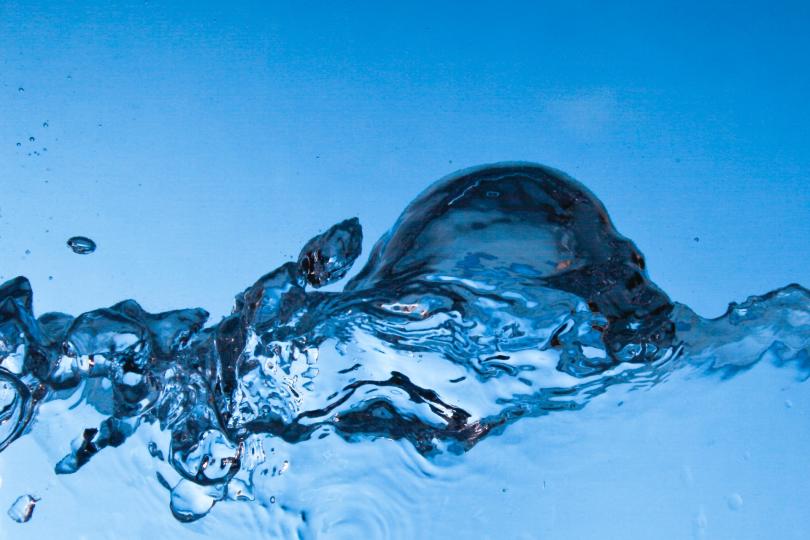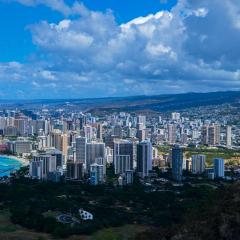Jonathan Scheuer on water issues surrounding Lāhainā fire
Jonathan Scheuer has been featured in recent New York Times, Washington Post, and local Hawaii coverage of water rights fights in the wake of the Lahaina fire. Excerpts from the stories are listed below, with links to the full articles.
Request was made to divert water to fight Maui fire
Hawaii Star Advertiser, August 16
On the day after the fire, the West Maui Land Co. Inc. sent a letter to Deputy Director M. Kaleo Manuel of the Hawaii Commission on Water Resource Management, or CWRM, describing the events and communication problems that resulted in delaying the diversion of streams to fill reservoirs with water being made available to fight the fire. …
Although [Hawaii Governor] Green didn’t address the West Maui Land Co. incident directly, he waded into the topic during remarks at a Lahaina fire news briefing Monday.
“One thing that people need to understand, especially those from far away, is that there’s been a great deal of water conflict on Maui for many years,” Green said. “It’s important that we’re honest about this. People have been fighting against the release of water to fight fires. I’ll leave that to you to explore.”
The governor added: “We have a difficult time on Maui and other rural areas getting enough water for houses, for our people, for any response. But it’s important we start being honest. There are currently people still fighting in our state giving us water access to fight and prepare for fires even as more storms arise.”
Green already had ordered Attorney General Anne Lopez to conduct a “comprehensive review” of the decisions made before, during and after the fire.
Water advocates took exception to Green’s remarks.
Wayne Tanaka, director of the Sierra Club of Hawai‘i, called them “ridiculous, inflammatory and lacking in actual detail.” Firefighting, he said, is always a priority in the allocation of water, even for those advocating for fairness in the process.
“The real concern is diverters trying to exploit a horrible tragedy to gain control of water resources,” Tanaka said.
Water rights expert Jonathan Scheuer, author of the 2022 book “Water and Power in West Maui,” said Lahaina used to be a wetland and Native Hawaiians managed their water carefully for centuries until the plantations came along, diverted most of it and even created a famine in the mid-1800s.
“The governor appears to be misinformed about the very long history of the state’s failure to fulfill its public trust duties in regard to water,” he said.
Scheuer said he was taken aback by the governor’s remarks. “I’ve never heard anyone suggest water not be available for firefighting purposes,” he said.
Lāhainā fires reveal ongoing power struggle for West Maui water rights
Hawaii Public Radio, August 17
“In the close to 30 years that I've been working on water issues around Hawaiʻi, especially on Maui, I've never seen where a fundamental lack of water was a cause for not being able to build housing, not being able to have water for prevention of fires, not to be able to have water for streams,” Scheuer said.
"We need to, especially in the changing climate, make sure that we require people to use water with great care and efficiency before starting to cast blame on the very communities who've stepped up to say that we should have a balance in our water management in Hawai'i rather than having water solely go to whoever has the most money and power," he said.
Fire Exposes Flaws in Hawaii’s Defenses Against Climate Shocks
New York Times, August 18
Neglected landscapes, weak building standards and decommissioned dams have left the state more vulnerable to wildfires.
In 2006, a dam burst on Kauai, killing seven people and leading the state to tighten standards. But rather than meet new standards, some private owners simply destroyed their dams. Since then, 21 dams have been breached or removed, according to state records.
That has significantly reduced the state’s capacity to store increasingly scarce rainfall, water that could be used to irrigate land and make it more resistant to fire, according to Jonathan Scheuer, an expert in Hawaii water policy.
“At the very moment at which we need more storage, there’s less storage available,” Mr. Scheuer said.
Lahaina Fire Prompts a Shift in Maui’s Long-Running Water Fights
New York Times, August 20
After a fight over water on the day of the Lahaina fire, the governor says the state has “tipped too far” in trying to preserve water.
Water has long been a point of tension in Hawaii, where European and American owners of sugar cane plantations altered the landscape in the 1800s to irrigate their crops. Now, with Maui’s growth as one of the world’s most desirable places to vacation, with landscaped resorts, pools and golf courses, water systems are strained.
In Maui, much of the fresh water comes from a series of streams that run out of the mountains and eventually into the ocean. Small traditional farmers tap these streams, as do huge commercial farms and luxury subdivisions. Water is also pumped from the ground through wells.
Advocates who want water preserved for Native Hawaiian cultural uses, such as the growing of taro, a staple of traditional meals, say the governor is using the fire to undo decades of necessary limits on water use, paving the way for more building across Hawaii.
“It is appearing to be increasingly clear that the Green administration intends to remake Hawaii, stripping native Hawaiians and the public of their most basic protection against the exploitation of land and water,” said Jonathan Likeke Scheuer, a water policy consultant who has served in several government roles related to land use and Native Hawaiian affairs.
“He is removing anyone standing in his way,’’ he said.
Lahaina’s deadly fire has intensified Maui’s fight over water rights
Washington Post, August 23
Native Hawaiians say the tragedy is being used as a pretext to roll back their gains in securing water supplies.
Since the fire, Gov. Green has repeatedly highlighted the ongoing water conflict on Maui in remarks to reporters. He has suspended portions of the water code “necessary to respond to the emergency,” and has signaled he may further relax water regulations throughout West Maui.
Although each U.S. state has its own rules, water is a public trust in Hawaii, a legacy of its days as a sovereign kingdom. The State Commission on Water Resource Management sets standards for the amount of water that must flow through streams; citizens can petition over those.
The legal framework around water rights has “been one of the few tools available to Native Hawaiians to fight against the commercial forces that have been bearing down on the islands for the last 50 years,” said Jonathan Scheuer.
How 19th-century pineapple plantations turned Maui into a tinderbox
The Guardian, August 27
Land privatization and water depletion set the stage for the Lahaina fire 150 years ago. Now, land companies may benefit even more
The Great Māhele of 1848, a ground-breaking law that legitimized private land ownership, laid the ground for big developers to hoard water for profit, said Jonathan Likeke Scheuer, a water policy consultant and co-author of the book Water and Power in West Maui.
Although the law did not privatize water, he said, the creation of private property allowed agricultural corporations to wield “political and ultimately oligarchic power” over elected officials.
In 1893, a group of sugar magnates and capitalists overthrew the Hawaiian Kingdom’s Queen Liliuokalani, paving the way for the US to annex Hawaii five years later. Sanford Ballard Dole, a cousin of Dole Plantation’s founder, served as the first governor of Hawaii.
When the last of the sugar companies closed in 2016 due to rising labor costs and operating losses, Scheuer said, the farms were purchased by large investors for real estate speculation and left fallow, overrun with invasive grasses that became fuel for brush fires. Developers like West Maui Land Company Inc took control of the plantations’ century-old irrigation ditches and diverted water to service its luxury subdivisions. In doing so, it left scraps for Indigenous families who lived downstream.


